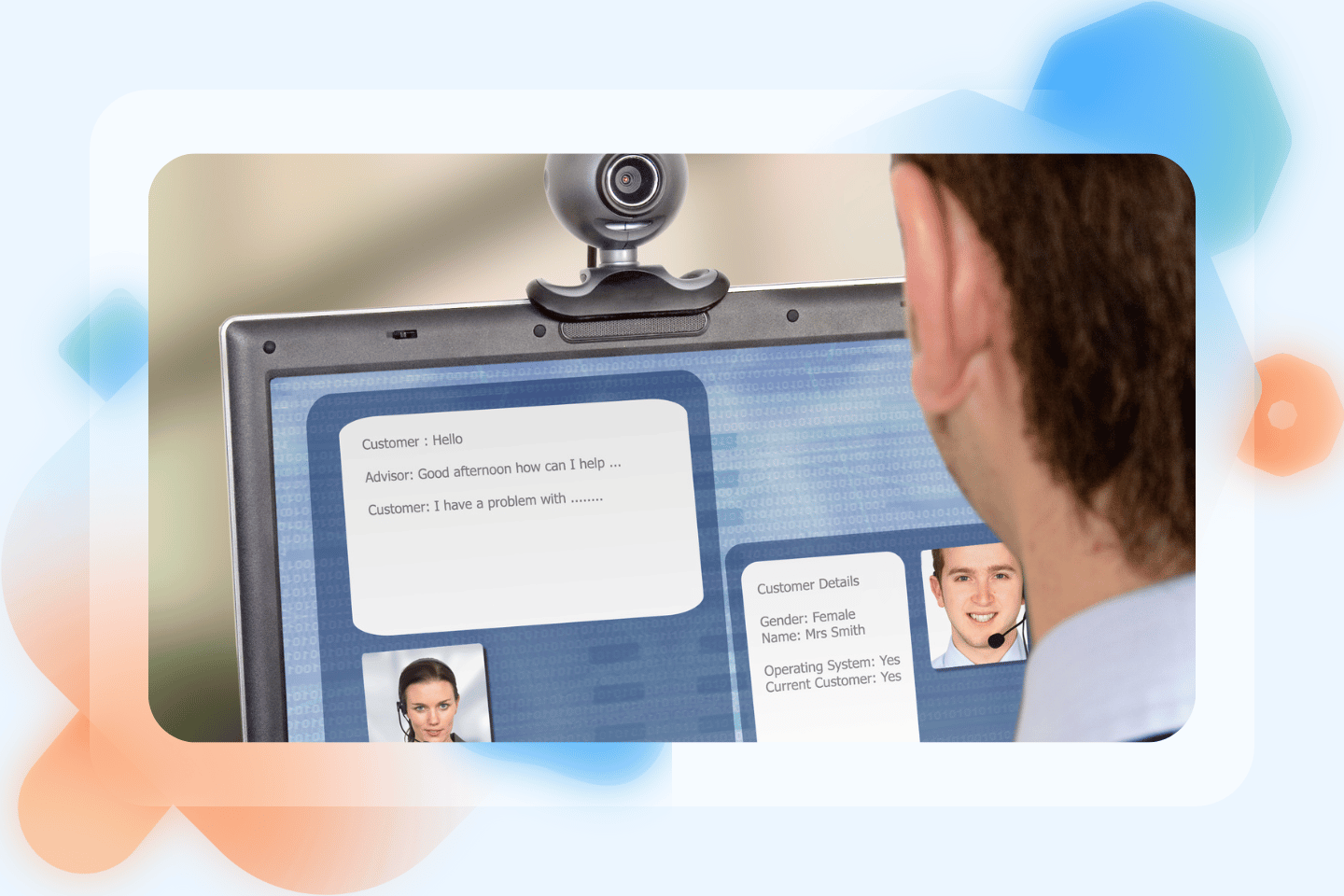Here’s your fact of the day: It gets challenging for businesses to handle a high volume of customer inquiries. The usual effect of this scenario? A long list of frustrated customers. But here’s a report to that further emphasizes this—1 in 10 UK or US consumers expect a response in less than 5 minutes. Now, how is this possible if you don’t have a proper customer service workflow?
Safe to say, there should be customer service workflows in place. That way, your team can respond to your customers’ needs timely, appropriately, and consistently.
If you’re new to the concept of customer service processes, fret not. We’ve got you. This article will talk about the eight must-have customer service workflow processes that will help you manage customer interactions better—and in turn, boost overall satisfaction.

A customer service workflow is a sequence of steps that describe how a business handles and solves customer requests, problems, or transactions.
Think of it as a systematic guide that helps the service team smoothly deal with customer interactions from start to finish. The simple goal is to streamline support operations and promote higher customer engagement, since 86% of customers are open to spending more for better service anyway.
Here’s how the ideal customer service workflow management looks.
- Inquiries/complaints are received—whether through calls, emails, or social media.
- They’re prioritized based on urgency or complexity.
- They’re handed off as tasks to the right team or individual.
- Fixing the customer’s problem or providing the needed information.
- Follow-up to check in with the customer and ensure satisfaction or address any lingering concerns
Why are customer service workflows important?

If you’re just starting your own customer service team, not having workflows for them is a recipe for inefficiency (and disaster). Customer service workflow management is crucial in an often chaotic customer service world. Here’s why:
Customer service workflows lead to efficiency gains.
This is about handling customer issues efficiently. Since customer service workflows define clear steps, you eliminate possible duplicates of efforts within the team. No ticket will be owned by more than one person. This means that there will be no unnecessary delays because resources (from human expertise to automated tools) are utilized efficiently.
Customer service workflow aids in building a positive brand reputation.
Your effective customer service workflows have a direct influence on a brand’s reputation. Having systematic workflows guides your service team to always respond professionally—and this professionalism actually contributes to how customers perceive brands .
If you consistently handle inquiries with professionalism, you reinforce that your brand can be trusted. Also, structured workflows usually involve feedback loops, and that signals that your brand cares about meeting customer expectations.
A streamlined customer service workflow ensures no customer query gets left behind.
A structured customer service workflow process ensures systematic handling of customer queries. First, that means you have a centralized reception place where all inquiries will be collected. Therefore, it’s also seamless to track if there’s any unattended or overlooked query. Plus, in important customer service workflows, there are assignment protocols to prevent queries from being stuck in a backlog.
A well-structured customer service workflow means faster onboarding for new service team members.
Besides the customer-facing benefit, an organized customer service workflow is also beneficial to a business internally. This is because it ensures that every team member follows the same process. So, from customer onboarding to training new team hires becomes easier. With concrete steps to follow, they can learn your team’s operational procedures in no time.
8 workflows your customer service strategy must have

Now, here’s the meat of this article so you can become an effective and efficient customer service leader. Check out these eight must-have workflows for your customer service strategy.
Workflow #1: Lightning-fast response systems
This workflow is about the rapid and efficient resolution of customer inquiries. Take note that a large percentage of customers—80 percent— switched brands over poor customer service.
Yes, be aware that lengthy wait or response times frequently result in customers taking their business elsewhere. Please go back to the 5-minute window report. Fast-response workflows prevent customers from giving up and turning to competitors instead.
In action: If a customer submits support ticket with a critical issue categorized as urgent, the lightning-fast response workflow triggers. Simultaneously, this ticket will be forwarded to the specialized team while also sending the customer a template-based acknowledgment. In the automated response, you must also let them know they will receive prompt attention ASAP.
Workflow #2: Personalized customer interactions
These are the clear steps that your team should follow to make every customer experience feel as personal as possible. It may involve AI solutions to have a thorough analysis of customer data and therefore create personalized profiles. It builds stronger customer relationships when service feels tailored (not robotic and scripted) to their specific needs, interests, and communication style. 40% of customers spend more than they planned when experiences are highly personalized.
In action: For a customer who frequently buys a specific product, this workflow lets you send personalized recommendations and exclusive promotions related to their favorite product And if customers or prospects reach out for support, the customer service representative is equipped to address them by name, coupled with tailored solutions based on their previous interactions.
Workflow #3: Proactive issue resolution
The focus here is on identifying and addressing potential problems before they escalate. Meaning issues are addressed before customers even complain or ask. 92% of consumers said they became more optimistic about the company following proactive contact. This involves continuous monitoring of customer interactions, data analysis to anticipate issues and the implementation of preventive measures.
In action: Say a software provider identifies a potential software bug that could impact how its users use its services. Before active users even report the issue, the workflow mandates that you inform them proactively there will be an upcoming software update. Along with the announcement comes an acknowledgment of the issue to assure them that you are already in the process of resolving it before the bug causes widespread inconvenience.
Workflow #4: Seamless multichannel support
Half of consumers today use at least four touchpoints in the buying process. So might as well have multichannel customer support—to get service how and when they want it. The workflow for seamless multichannel support aims to provide consistent and efficient customer assistance across various communication channels. Offering this helps companies to meet more customers on their terms.
In action: Consider a customer who contacts support via email but later follows up on social media. With this kind of workflow, you’re ensured that both interactions are logged. So when the customer communicates on social media, the support agent has access to their previous email conversation, providing a holistic understanding of the inquiry.
Workflow #5: Continuous feedback loops
This is all about putting customers first. The end users should be the drivers of how a product improves. So, this workflow centers on actively seeking and incorporating customer feedback to drive continuous improvement. That very action is viewed favorably by 77% of consumers.
In action: An eCommerce platform with Continuous Feedback Loops workflow regularly sends surveys to customers, asking about their shopping experience. If a recurring theme keeps showing up (like dissatisfaction with delivery times), the workflow triggers adjustments in the logistics process. The system then notifies customers about the improved delivery timelines, closing the feedback loop.
Workflow #6: Customer follow-up post-resolution
Simply put, this is a systematic way to gauge customer satisfaction on how you resolved their reported issue. Technically speaking, a problem isn’t fully solved until the reporter says so. To be accurate on this, you must implement a workflow with predefined procedures for reaching out to customers after their queries have been addressed.
In action: Think of a tech support scenario where a customer has an issue resolved by a support agent. This starts the workflow for following up with that same customer with an email expressing gratitude for the customer’s patience during the resolution process, the solution provided, and an invitation for further communication.
Workflow #7: Escalation of complex support tickets
Realistically, not all front liners of customer service are technical experts. So, for critical problems, there must be a predefined route when escalating such customer inquiries. This workflow ensures that complex support tickets are brought to the attention of specialists with the right skills and authority to resolve them. Here’s why it’s important—clueless reps make 70% of customers unhappy, and unhelpful ones frustrate 65%.
In action: In a customer support scenario, if a technical issue is identified (that frontline agents cannot resolve), the escalation workflow is initiated. The customer issue is acknowledged then follows the escalation protocol where a specialized technical support team can give the right details and context.
Workflow #8: Transaction lifecycle management
The goal is to create a smooth and transparent experience for customers, from placing an order to handling any billing inquiries or return requests. This workflow is dedicated to managing customer satisfaction throughout the purchasing journey. Basically, it’s a structured approach to billing processes, order fulfillment, and handling returns efficiently. This may involve integrating with inventory and customer databases to provide accurate order tracking and timely billing information.
In action: Imagine a customer placing an online order. The workflow ensures the accurate processing of the transaction, providing immediate order confirmation. In case of a return request, the workflow guides the customer through generating a return label.
5 things to remember when implementing workflows

While rolling out the above customer service workflow examples is really helpful, businesses can’t just immediately implement without keeping in mind the following:
1. You must keep them simple
Complex workflows can only slow down the customer service process. The more workflow steps there are, the more chances something gets missed or done wrong. Just remove the unnecessary steps in the process.
2. You must build them with flexibility
Even the best-designed workflows require tweaks once implemented in the real world. It takes testing and employee feedback to refine them. Just always give room for improvement. Regularly check the effectiveness of your customer service workflow processes, solicit feedback from team members, and tweak if you must.
3. You must have regular team training
Asking why there’s training when the customer service team just responds to customer queries? Well, you should also leverage automation in support. And that requires your agents to use analytics and other tools to automate data entry and routing. Thorough training is crucial for team members involved in executing customer service workflows.
4. You must involve stakeholders
Frontline staff, managers, and IT professionals each bring unique insights to the table. When building the workflows, involve them and product team right from the start to get input on designing optimal customer support workflows. Customer service workflows built on collaboration from higher-ups get quick buy-in.
5. You must always have proper documentation
If you want the customer onboarding workflow done, efficient and 100% repeatable, consider it as your another tribal knowledge. Document what you implemented so it serves as a reference guide when new or new team members will arrive. Or when company knowledge-sharing happens. Most importantly, proper documentation of your customer service workflow management ensures seamless navigation of the workflows in the face of employee turnover or role changes.
Implement a customer service workflow process so customers appreciate you more
If you look closely, implementing customer service workflow processes is a gateway to a more customer-centric business. They standardize the support operations, so you consistently give quality service.
The eight examples above can jumpstart the entire optimization of your support system. If you couple them with highly trained service agents at the forefront, that’s a perfect combo for a higher level of customer service. Contact LTVplus today and see how our agents can work seamlessly with you to achieve higher customer satisfaction scores.




